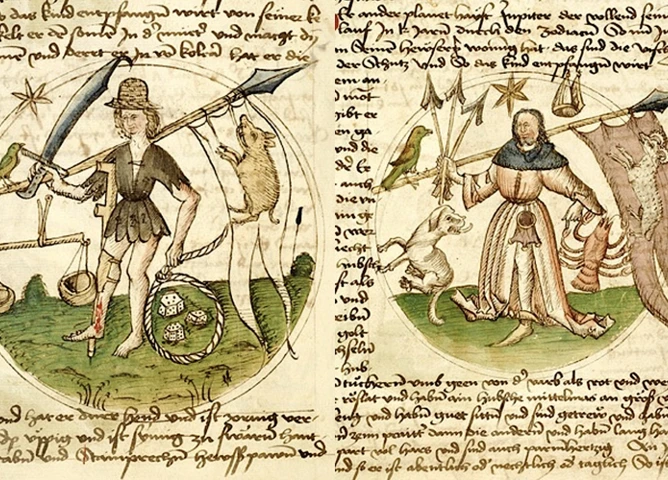In the vast expanse of the cosmos, there exists a remarkable phenomenon that has captivated and intrigued ancient civilizations throughout history – planetary alignments. These celestial alignments have served as beacons of timeless symbolism, giving rise to profound interpretations and influencing various aspects of human culture. From Mesopotamia to Egypt, from the Mayans to the Greeks, these alignments have held a special place in the hearts and minds of our ancestors. In this article, we delve into the rich tapestry of ancient cultures and explore the symbolic significance of planetary alignments, uncovering the hidden messages they convey and their profound impact on agriculture, religion, architecture, and even modern-day fascination. Join us on this cosmic journey as we unravel the mysteries that lie within the alignments of our celestial companions.
Contents
- Ancient Cultures and Planetary Alignments
- Symbolic Interpretation of Planetary Alignments
- The Cultural Impact of Planetary Alignments
- Astronomical Alignments in Modern Times
- Conclusion
-
Frequently Asked Questions
- 1. What are planetary alignments?
- 2. How did ancient cultures observe and track planetary alignments?
- 3. What was the significance of planetary alignments in ancient Mesopotamia?
- 4. What role did planetary alignments play in ancient Egyptian culture?
- 5. Did the Mayans have a special connection to planetary alignments?
- 6. How did the ancient Greeks interpret planetary alignments?
- 7. Can planetary alignments affect earthly events?
- 8. How have modern technologies aided in studying planetary alignments?
- 9. What is the contemporary fascination with planetary alignments?
- 10. Can we still see planetary alignments today?
- References
-
Frequently Asked Questions
- 1. How did ancient cultures observe and interpret planetary alignments?
- 2. What role did planetary alignments play in ancient Mesopotamia?
- 3. How did ancient Egyptians interpret planetary alignments?
- 4. What was the significance of planetary alignments in Mayan civilization?
- 5. How did ancient Greeks view planetary alignments?
- 6. What symbolic meaning did ancient cultures attribute to planetary alignments?
- 7. How did planetary alignments impact agriculture and seasonal cycles?
- 8. In what ways did planetary alignments influence religious and ritual practices?
- 9. How did planetary alignments contribute to architectural and urban planning?
- 10. How are planetary alignments studied and observed in modern times?
- References
- Read More
Ancient Cultures and Planetary Alignments
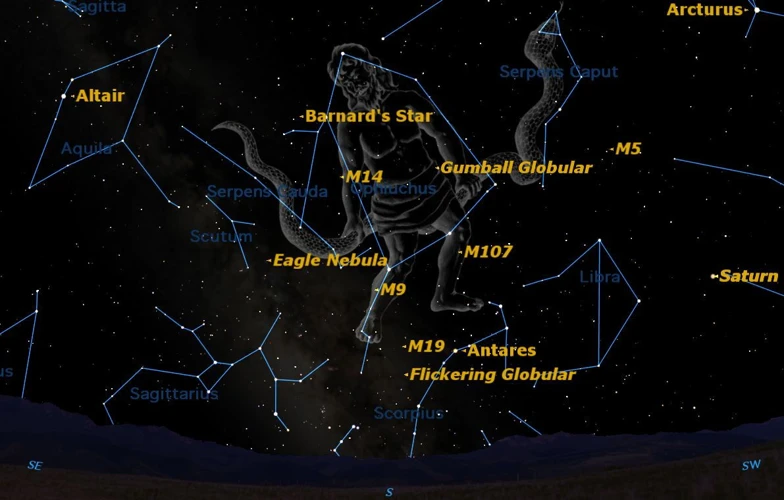
Ancient cultures across the globe have long been fascinated by the enchanting dance of the planets and the profound meanings behind their alignments. Let’s embark on a journey through time, exploring the captivating connection between ancient civilizations and planetary alignments. In ancient Mesopotamia, the birthplace of astrology, scholars meticulously observed celestial phenomena and recognized the significance of planetary alignments [link: retrograde planets astrology]. The ancient Egyptians, unveiling the divine through their rich mythology, associated planetary alignments with the gods and believed they held immense power [link: exploring mythological stories in zodiac signs]. The Mayan civilization, renowned for their advanced knowledge of astronomy, revered the cosmic harmony depicted in planetary alignments, aligning their calendars and rituals accordingly. As for the ancient Greeks, the bridge between mythology and astronomy, they saw planetary alignments as powerful omens and celestial symbols [link: evolution of modern constellations]. These ancient cultures understood that planetary alignments held a key to unlocking deeper universal truths and capturing the mysterious essence of the cosmos.
1. Mesopotamia: The Birth of Astrology
Mesopotamia, often hailed as the birthplace of astrology, played a pivotal role in the development of our understanding of planetary alignments. The ancient Mesopotamians meticulously observed the movements of the planets, recognizing their cyclical patterns and the significance of their alignments. They believed that these planetary alignments reflected the will of the gods and held the key to deciphering divine messages. By studying the positions of the planets and their alignments, Mesopotamian astrologers were able to predict various celestial events such as eclipses and the motion of retrograde planets [link: retrograde planets astrology]. These celestial observations and interpretations formed the foundation of astrology, shaping not only the culture and beliefs of Mesopotamia but also becoming influential in other ancient civilizations. The knowledge and wisdom gained from Mesopotamian astrology laid the groundwork for future astrological practices and inspired further explorations into the mythological stories associated with the zodiac signs [link: exploring mythological stories in zodiac signs]. Mesopotamia’s influence on astrology extended beyond its time, with its discoveries paving the way for the evolution of modern constellations [link: evolution of modern constellations]. The birth of astrology in Mesopotamia marks a pivotal moment in human history, as it laid the groundwork for our ongoing fascination with celestial alignments and their symbolic significance.
2. Ancient Egypt: Unmasking the Divine
In ancient Egypt, the alignment of planets was deeply interconnected with their religious and spiritual beliefs, unmasking the divine essence that permeated their civilization. The ancient Egyptians believed that each planet was associated with a specific deity, and the alignments held profound significance in revealing the will of the gods. The alignment of the Sun and the planet Horus, for example, symbolized the union of Ra, the Sun god, and Horus, the sky god and divine protector [link: exploring mythological stories in zodiac signs]. This alignment was seen as a divine confirmation of the pharaoh’s divine right to rule. The alignment of Venus and the moon was a celestial representation of the goddess Isis, the divine mother and protector of Egypt, bestowing her blessings upon the land. The ancient Egyptians meticulously observed these planetary alignments, using their knowledge to guide their religious practices and rituals. The alignment of the planets served as a reminder of the gods’ watchful presence and their influence over the earthly realm. By deciphering the patterns and messages conveyed by planetary alignments, the ancient Egyptians sought to deepen their spiritual connection with the divine and gain insight into the cosmic forces at play. The alignment of the planets was seen as a communication channel between humans and the gods, enabling them to navigate their earthly existence in harmony with the higher realms of existence.
3. Mayan Civilization: Cosmic Harmony
The Mayan civilization, known for its advanced understanding of astronomy, revered the concept of cosmic harmony and its connection to planetary alignments. The Mayans believed that the movements of celestial bodies were intricately tied to the cycles of life on Earth. They observed the planets with great precision and developed complex calendars aligned with the celestial events they witnessed. The Mayans saw planetary alignments as divine messages, representing the unification of the heavens and the earthly realm. These alignments were believed to hold immense spiritual significance, guiding their rituals, ceremonies, and agricultural practices. The Mayan pyramids and temples were constructed with careful consideration of celestial alignments, with certain structures aligning with specific planets or stars during significant cosmic events. These alignments served as expressions of their deep reverence for celestial harmony and their belief in the interconnectedness of all things. The Mayan civilization’s fascination with planetary alignments showcases their profound understanding of the cosmos and their unwavering pursuit of cosmic balance and unity [link: exploring mythological stories in zodiac signs].
4. Ancient Greece: Mythology Meets Astronomy
In ancient Greece, the intersection of mythology and astronomy brought forth a unique understanding of planetary alignments. For the Greeks, the celestial bodies were not mere astronomical phenomena but powerful gods and goddesses with their own stories and personalities. Greek mythology is rich with tales of gods and their interactions with the planets, making planetary alignments all the more intriguing. The Greeks believed that the alignment of the planets held significant meaning and served as omens for earthly events. They associated each planet with a specific deity and interpreted their alignments as messages from the gods. For example, the alignment of Venus, associated with Aphrodite, the goddess of love and beauty, was seen as an auspicious sign for matters of the heart [link: exploring mythological stories in zodiac signs]. Similarly, the alignment of Mars, associated with Ares, the god of war, was interpreted as a foreboding sign of conflict or battles to come. The Greeks also found inspiration in the constellations, which they believed were created to immortalize heroes and mythological figures. The alignment of planets within these constellations was seen as a cosmic affirmation of their heroic tales and an alignment between the mortal and divine realms [link: evolution of modern constellations]. This blending of mythology and astronomy in ancient Greece gave rise to a symbolic interpretation of planetary alignments, where the celestial dance of the planets was seen as a reflection of the realm of gods and the potential influences on human affairs.
Symbolic Interpretation of Planetary Alignments
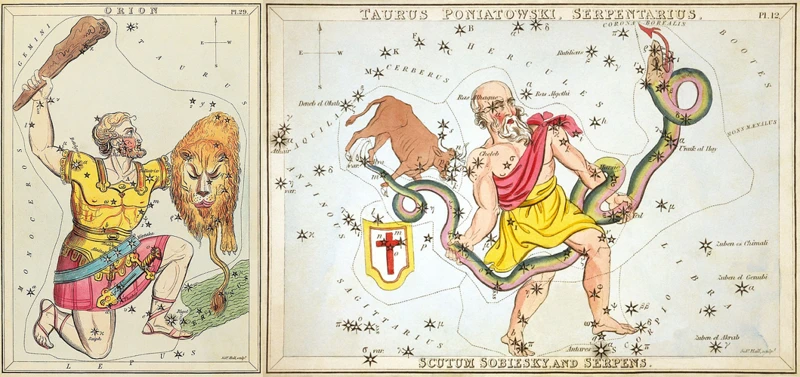
The symbolic interpretation of planetary alignments in ancient cultures unveils a profound understanding of the cosmic language spoken by the celestial bodies in the heavens. These alignments were seen as divine messages, conveying hidden truths and guiding earthly affairs. In ancient civilizations such as Mesopotamia and Egypt, planetary alignments were associated with the gods and believed to hold immense power [link: exploring mythological stories in zodiac signs]. They were seen as omens, foretelling significant events and influencing human destiny. Additionally, planetary alignments reflected earthly events, mirroring the ebb and flow of human life and society. The alignment of planets was interpreted as a reflection of the harmony or discord in human affairs, providing insight into the current state of the world [link: retrograde planets astrology]. The spiritual significance of planetary alignments was recognized, as they were believed to connect the earthly realm with the divine. These alignments were seen as portals, allowing for communication and communion with higher realms of consciousness. The symbolic interpretation of planetary alignments served as a powerful tool for understanding the intricate relationship between the cosmos and humanity, offering guidance, wisdom, and a deeper connection to the mysteries of existence.
1. Celestial Connections as Divine Messages
The ancients perceived celestial connections and planetary alignments as more than mere astronomical occurrences—they believed them to be divine messages from the gods. In Mesopotamia, astrologers closely analyzed planetary alignments and their corresponding celestial events, interpreting them as direct communications from the deities to humanity. The Egyptians, deeply rooted in their rich mythology, associated planetary alignments with the gods themselves, viewing their movements as celestial manifestations of divine will and intervention. They believed that these alignments held sacred messages and insights into the future, guiding their decisions and actions. The Mayans, renowned astronomers, saw planetary alignments as a harmonious synchronicity between the heavens and the earthly realm, regarding them as divine affirmations of cosmic order and balance. The Greeks, drawing upon their mythology and belief in the divine, considered planetary alignments as powerful omens and portents, carrying profound messages from the gods [link: exploring mythological stories in zodiac signs]. From ancient cultures across the globe, the belief in celestial connections as divine messages underscores the universal human quest for understanding and interpretation of the cosmos and our place within it.
2. Cosmic Alignments Reflecting Earthly Events
Ancient cultures believed that cosmic alignments of the planets were intricately connected to events unfolding on Earth. This intriguing concept of planetary alignments reflecting earthly events can be seen in various historical accounts. In Mesopotamia, astrologers meticulously observed the movement and alignment of celestial bodies to predict and interpret significant events, such as the rise and fall of empires or natural disasters. They believed that certain alignments could signify favorable or unfavorable outcomes in matters of state and individual lives. The ancient Egyptians, too, sought meaning in the alignment of planets, associating them with divine messages and omens. They believed that celestial alignments held the power to foreshadow events like floods, droughts, and other natural phenomena, which impacted their agricultural practices and daily lives. The Mayans, with their advanced knowledge of astronomy, recognized the correlation between planetary alignments and terrestrial events, aligning their calendars and rituals with these cosmic patterns. The ancient Greeks, with their rich mythology and fascination with the stars, saw planetary alignments as reflections of earthly events and believed that certain cosmic alignments heralded significant historical moments and the actions of their gods [link: retrograde planets astrology]. These ancient cultures viewed the alignments as a language of the cosmos, allowing them to glimpse into the interwoven relationship between the celestial and human realms and providing insights into the course of earthly events.
3. Spiritual Significance of Planetary Alignments
The spiritual significance of planetary alignments holds a profound place in ancient cultures, where these celestial events were seen as divine messages from the cosmos. The alignment of planets was believed to influence human consciousness and possess spiritual implications. In Mesopotamia, astrologers associated planetary alignments with the gods and interpreted them as signs of blessings or warnings [link: retrograde planets astrology]. The ancient Egyptians, with their intricate mythology, connected planetary alignments to the movements of their gods, seeing them as celestial manifestations of spiritual energy [link: exploring mythological stories in zodiac signs]. The Mayans, renowned for their deep understanding of astronomy, considered the alignment of planets as spiritual harmonies that guided their sacred rituals and ceremonies. These ancient cultures believed that observing and understanding planetary alignments provided a means to commune with the divine and gain insight into the mysteries of the universe. The spiritual significance of these alignments endures, as many practitioners of astrology and spirituality continue to explore their cosmic connections and seek guidance from the aligned planets.
The Cultural Impact of Planetary Alignments
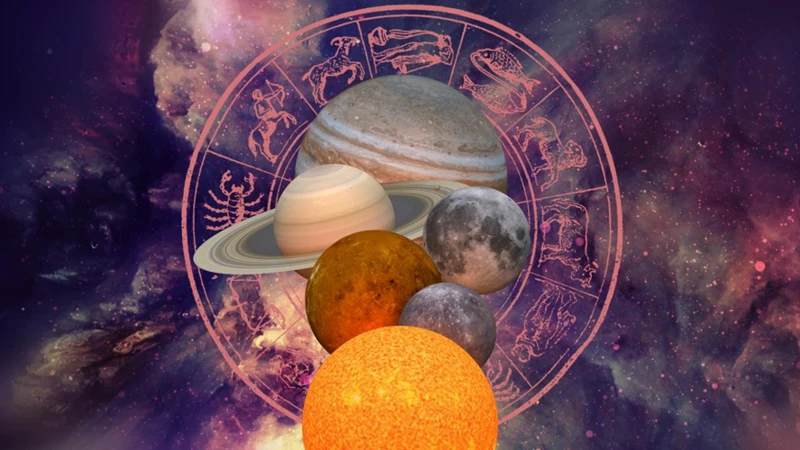
The impact of planetary alignments goes far beyond their symbolic significance. These celestial phenomena have shaped and influenced various aspects of human culture throughout history. In the realm of agriculture and seasonal cycles, ancient civilizations such as the Mesopotamians and Egyptians recognized the correlation between planetary alignments and the timing of planting and harvesting, relying on these cosmic events to guide their agricultural practices. Religion and ritual practices also bore the imprint of planetary alignments, with cultures attributing spiritual significance to these celestial occurrences. The alignment of celestial bodies influenced the design and orientation of sacred spaces, temples, and monuments, as seen in the architectural and urban planning of ancient civilizations. These cultural aspects continue to reverberate today, with a growing interest in ancient practices and a desire to reconnect with our cosmic roots. Explore the profound cultural impact of planetary alignments and discover the interconnectedness between the celestial and the earthly [link: retrograde planets astrology].
1. Influence on Agriculture and Seasonal Cycles
The influence of planetary alignments on agriculture and seasonal cycles cannot be overstated. Ancient cultures recognized the correlation between celestial movements and the success of their crops, relying on these alignments to guide their agricultural practices. In ancient Mesopotamia, farmers looked to the position of the planets to determine the optimal time for planting and harvesting, believing that the alignment of celestial bodies directly impacted the fertility of the Earth [link: retrograde planets astrology]. Similarly, the ancient Egyptians incorporated planetary alignments into their agricultural calendar, aligning planting and harvesting seasons with specific celestial events [link: exploring mythological stories in zodiac signs]. The Mayans, with their advanced understanding of astronomy, used the positions of planets and stars to predict the best times for sowing and reaping their crops, ensuring a bountiful harvest. These ancient civilizations realized that the alignment of the planets played a vital role in determining the cycles of nature, allowing them to thrive on the rhythms of the cosmos. By attuning themselves to the movements of the celestial bodies, they harnessed the power of the universe to cultivate abundant crops and ensure their survival.
2. Role in Religious and Ritual Practices
The role of planetary alignments in religious and ritual practices was of great significance to ancient cultures. These celestial alignments were seen as divine messages and powerful omens, guiding religious ceremonies and shaping the belief systems of these civilizations. For example, in ancient Mesopotamia, planetary alignments were intricately linked to their astrological beliefs and played a vital role in determining the fate of individuals and nations. The Babylonians and Assyrians associated each planet with a specific deity and believed that the positions and alignments of these celestial bodies influenced human affairs [link: retrograde planets astrology]. In ancient Egypt, the alignment of certain planets, particularly Venus and Sirius, held profound religious significance. Venus, representing the goddess Isis, was believed to be associated with rebirth and renewal, while the appearance of Sirius in the pre-dawn sky marked the beginning of the Nile flood, a crucial event for agricultural fertility and religious celebrations. These alignments played a crucial role in the timing and organization of religious rituals and festivals [link: exploring mythological stories in zodiac signs]. Additionally, the Maya civilization held a deep spiritual connection to the cosmos and considered planetary alignments to be a reflection of cosmic harmony. They believed that aligning their rituals with specific celestial events would bring alignment and balance to their lives and ensure the prosperity of their civilization. The observation of planetary alignments allowed them to determine the most auspicious times for performing ceremonies, making offerings, and seeking guidance from the divine [link: evolution of modern constellations]. The role of planetary alignments in religious and ritual practices served as a bridge between the earthly and celestial realms, allowing ancient civilizations to connect with the divine and find meaning in the cosmic dance of the planets.
3. Contribution to Architectural and Urban Planning
The planetary alignments of ancient times not only influenced religious and agricultural practices but also left a lasting impact on architectural and urban planning. Ancient cultures believed that the arrangement of celestial bodies held significant spiritual and cosmic energy, which they sought to incorporate into their physical surroundings. For example, in ancient Egypt, the alignment of the pyramids with specific constellations was believed to connect the earthly realm with the divine [link: exploring mythological stories in zodiac signs]. In Mesopotamia, the ziggurats were constructed to align with celestial events and served as sacred spaces connecting the gods with the mortal realm. The Mayans, known for their exceptional understanding of astronomy, designed their cities and temples to align with celestial events, integrating the cosmic rhythm into their urban landscapes. Even in ancient Greece, the city of Athens was not only planned based on practical considerations but also aligned with the position of the sun and stars during significant moments of the year [link: evolution of modern constellations]. These examples demonstrate the profound belief in the connection between celestial alignments and the physical structures that shaped ancient civilizations.
Astronomical Alignments in Modern Times
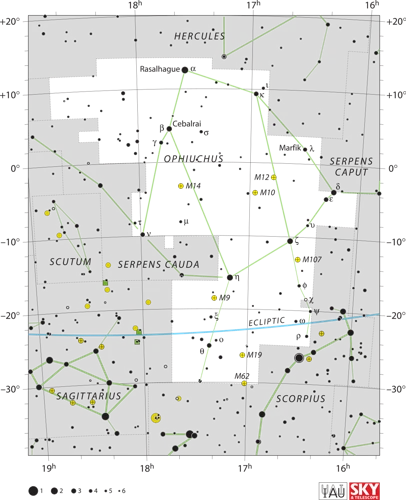
In modern times, the fascination with astronomical alignments continues to thrive, albeit through a different lens. With advancements in technology, scientists and enthusiasts alike have greater access to studying and analyzing these celestial phenomena. Contemporary interest in planetary alignments extends beyond astrology and into fields such as astronomy, physics, and cosmology. Researchers use sophisticated tools and telescopes to observe and record precise measurements of planetary alignments, shedding light on the workings of our solar system and beyond. The study of planetary alignments has paved the way for discoveries regarding the behavior of retrograde planets, which have intriguing effects on astrological interpretations [link: retrograde planets astrology]. Enthusiasts explore the mythological stories and zodiac signs associated with these alignments, uncovering the ancient wisdom embedded in the cosmic patterns [link: exploring mythological stories in zodiac signs]. As we embrace the wonders of a technologically advanced era, the timeless allure of astronomical alignments continues to captivate our curiosity and inspire scientific exploration.
1. Contemporary Interest in Planetary Alignments
In the modern era, there has been a resurgence of interest in planetary alignments and their potential impact on our lives. With advancements in technology and a growing fascination with the cosmos, people are increasingly drawn to the study and interpretation of these celestial alignments. Contemporary astrologers and enthusiasts eagerly track the movements of planets and their alignments, seeking to understand their potential influence on human behavior, relationships, and world events. The phenomenon of retrograde planets, where a planet appears to move backward in its orbit, has garnered particular attention in recent years, with astrologers analyzing the significance of these retrograde periods and their effects on individuals and society [link: retrograde planets astrology]. The exploration of mythological stories associated with zodiac signs has fueled interest in planetary alignments as archetypal symbols that resonate deeply within our collective unconscious [link: exploring mythological stories in zodiac signs]. As our knowledge of the universe expands, so does our appreciation for the intricate connections between celestial phenomena and human experiences. The contemporary interest in planetary alignments serves as a testament to our ongoing fascination with the celestial realm and the potential wisdom it holds for us in the modern age.
2. Studying Alignments through Technology
In the modern era, technology has revolutionized the way we study and understand planetary alignments. Advanced astronomical instruments and powerful telescopes have allowed researchers to observe and analyze celestial movements with unprecedented accuracy and detail. Through these technological advancements, scientists can precisely calculate future alignments and predict celestial events with remarkable precision. Additionally, computer simulations and modeling have enabled researchers to simulate planetary alignments and their effects, offering insights into the mechanics and dynamics of these cosmic phenomena. The integration of technology with astrology has provided astrologers with tools to analyze and interpret planetary alignments in relation to astrological principles and birth charts, enhancing their ability to provide insightful readings and predictions [link: retrograde planets astrology]. The digital age has also opened up avenues for amateur astronomers and enthusiasts to make astronomical discoveries and delve into the world of planetary alignments. Online resources, such as interactive sky maps and virtual astronomy programs, enable individuals to explore and understand these alignments in a user-friendly manner. With technology as our ally, we continue to unlock the secrets of planetary alignments, expanding our knowledge and deepening our connection with the wonders of the universe.
3. Reviving Ancient Practices in New Forms
In the modern era, there has been a renewed interest in reviving ancient practices related to planetary alignments, albeit in new forms. As people delve deeper into the wisdom of the past, they seek to integrate ancient knowledge with current technologies and perspectives. One area where this revival is evident is in the field of astrology, where the study of planetary alignments continues to captivate enthusiasts. Astrologers now make use of computational tools and software to calculate and interpret the alignments [link: retrograde planets astrology]. These advancements have allowed for more precise and detailed analyses, enhancing the accuracy and relevance of astrological readings.
The revival of ancient practices extends to the exploration of mythological stories associated with zodiac signs. As people delve into the rich narratives and symbolism embedded within ancient mythologies, they gain new insights into the significance of planetary alignments in relation to human experiences and archetypes [link: exploring mythological stories in zodiac signs]. This deeper understanding allows individuals to connect with ancient wisdom in a contemporary context, and to find personal meaning and guidance through the alignment of the planets.
The evolution of modern constellations has also played a role in reviving ancient practices. While traditional constellations have been passed down through generations, modern astronomers have introduced new constellations based on scientific discoveries and cultural influences. These new constellations offer a fresh perspective on planetary alignments and provide a bridge between ancient wisdom and modern scientific knowledge [link: evolution of modern constellations]. They allow us to explore the cosmos with a renewed sense of wonder and appreciation, while still honoring the traditions of our ancestors.
In reviving ancient practices in new forms, we are not merely attempting to recreate the past, but rather seeking to reconcile ancient wisdom with our present understanding of the world. By blending ancient knowledge with modern technologies and perspectives, we can unravel the mysteries of planetary alignments in ways that resonate with the complexity of our contemporary lives. It is through this revival that we continue to find inspiration, guidance, and a deeper connection to the cosmos.
Conclusion

In conclusion, the symbolism of planetary alignments in ancient cultures is a testament to the enduring fascination humans have had with the celestial realms. These alignments served as a profound source of inspiration and guidance for our ancestors, influencing various aspects of their lives. From Mesopotamia to Egypt, Mayan civilization to ancient Greece, each culture uniquely interpreted and sought meaning in these celestial phenomena. Whether through astrology, mythology, or spiritual beliefs, planetary alignments were seen as divine messages [link: retrograde planets astrology]. They were viewed as reflections of earthly events, connecting the microcosm of human existence to the macrocosm of the universe [link: exploring mythological stories in zodiac signs]. The cultural impact of planetary alignments extended far beyond the realms of spirituality and mythology. They affected agricultural practices, religious rituals, and even urban planning and architecture [link: evolution of modern constellations]. Today, there is a revived interest in planetary alignments, with advancements in technology allowing for more precise observations and studies. We stand on the shoulders of our ancient predecessors, continuing to explore and unravel the mysteries of celestial alignments in new and innovative ways. The enigmatic pull of the planets and their alignments continues to captivate and awe us, reminding us of our connection to the cosmos and the eternal symbolism that lies within.
Frequently Asked Questions

1. What are planetary alignments?
Planetary alignments refer to the arrangement of planets in the solar system, where multiple planets appear in close proximity to each other from our Earthly vantage point.
2. How did ancient cultures observe and track planetary alignments?
Ancient cultures meticulously observed the night sky, using naked-eye observations and developing sophisticated astronomical techniques to track the movements of celestial bodies, including planetary alignments.
3. What was the significance of planetary alignments in ancient Mesopotamia?
In ancient Mesopotamia, planetary alignments held great astrological importance. They were believed to have cosmic influence over human affairs and served as divinatory tools to gain insight into personal and societal events.
4. What role did planetary alignments play in ancient Egyptian culture?
The ancient Egyptians associated planetary alignments with their pantheon of gods and saw them as reflections of divine power. They believed that the alignments held clues about the gods’ intentions and used them in religious ceremonies and rituals.
5. Did the Mayans have a special connection to planetary alignments?
Absolutely! The Mayans had an advanced understanding of astronomy and integrated planetary alignments into their calendars, religious practices, and agriculture. They believed that harmonious alignment of celestial bodies brought blessings and abundance to their civilization.
6. How did the ancient Greeks interpret planetary alignments?
The ancient Greeks, merging mythology with astronomy, viewed planetary alignments as significant omens and symbols. They attributed various mythological stories and characteristics to the planets and incorporated them into their cultural and philosophical beliefs.
7. Can planetary alignments affect earthly events?
While there is no scientific evidence for a direct causational relationship, ancient cultures believed in the influence of planetary alignments on earthly events. They saw a connection between celestial movements and natural phenomena, human behavior, and even political and social changes.
8. How have modern technologies aided in studying planetary alignments?
Modern technologies such as telescopes, satellites, and computer simulations have allowed scientists to study planetary alignments with unprecedented precision. This has led to a deeper understanding of celestial mechanics and the ability to make accurate predictions about future alignments.
9. What is the contemporary fascination with planetary alignments?
Today, planetary alignments continue to captivate the human imagination. People are drawn to their beauty, mystery, and potential symbolism, sparking interest in astrology, astronomy, and the interconnectedness of the cosmos.
10. Can we still see planetary alignments today?
Absolutely! Planetary alignments occur regularly, and while some are more rare than others, they can be observed with the naked eye or through telescopes. Staying updated on astronomical events can help enthusiasts witness these celestial phenomena.
References
Frequently Asked Questions

1. How did ancient cultures observe and interpret planetary alignments?
Ancient cultures observed and interpreted planetary alignments through careful observation of the movements of celestial bodies, combined with their spiritual and mythological beliefs. They attributed great significance to these alignments, considering them as divine messages or reflections of earthly events.
2. What role did planetary alignments play in ancient Mesopotamia?
In Mesopotamia, planetary alignments played a crucial role in the development of astrology. The alignments were closely observed and used to predict future events, determine favorable times for various activities, and gain insight into the will of the gods.
3. How did ancient Egyptians interpret planetary alignments?
Ancient Egyptians believed that planetary alignments were a way for the divine to communicate with the mortal realm. They associated each planet with a specific deity and interpreted the alignments as messages or signs from these gods.
4. What was the significance of planetary alignments in Mayan civilization?
For the Mayans, planetary alignments represented a harmonious connection between the cosmos and earthly affairs. They used astronomical observations to create precise calendars and predict celestial events, which influenced their agricultural practices and religious ceremonies.
5. How did ancient Greeks view planetary alignments?
Ancient Greeks combined their rich mythology with astronomy to interpret planetary alignments. They believed that the alignments represented interactions between gods and had both symbolic and practical significance.
6. What symbolic meaning did ancient cultures attribute to planetary alignments?
Ancient cultures attributed symbolic meanings to planetary alignments, such as divine messages, reflections of earthly events, and spiritual guidance. They saw the alignments as a way to understand and harmonize with the larger cosmic order.
7. How did planetary alignments impact agriculture and seasonal cycles?
Planetary alignments played a significant role in ancient agricultural practices. Farmers would use these alignments to determine the best times for planting, harvesting, and other agricultural activities, aligning their actions with the celestial rhythms of the planets.
8. In what ways did planetary alignments influence religious and ritual practices?
Religious and ritual practices often incorporated planetary alignments as important elements. Ancient cultures would hold ceremonies or perform rituals during specific alignments, believing that they enhanced the connection between the divine and the mortal realm.
9. How did planetary alignments contribute to architectural and urban planning?
Planetary alignments influenced architectural and urban planning in ancient civilizations. Temples, pyramids, and other structures were often constructed to align with particular celestial bodies, emphasizing the connection between the earthly and the celestial realms.
10. How are planetary alignments studied and observed in modern times?
In modern times, planetary alignments are studied using advanced technology such as telescopes and computer simulations. Astronomers and researchers continue to observe these alignments to gain a better understanding of celestial mechanics and their historical significance.

